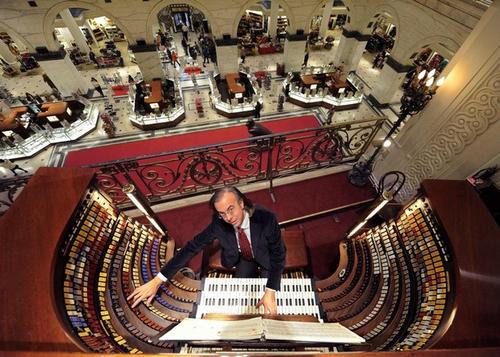Les Misérables is one of the most famous Broadway musicals of all time. I was surprised to learn that it only debuted on Broadway in 1987. It's such canon, I feel it's been around forever. The musical is based on Victor Hugo's classic French novel of the same name. Originally the musical was written in French, and if you search well you can find the original concept album from 1980. The musical was translated soon after it was written in French, and the rest is history.
| Alain Boublil and Claude-Michel Shönberg |
| Victor Hugo |
The team behind Les Misérables (and many other successful musicals, including Miss Saigon) is the Tunisian writer Alain Boublil and French composer Claude-Michel Shönberg.
The novel and musical deal with the life stories of several characters struggling through unrest in France from the the time Napolean was defeated up until the June Rebellion.
Do You Hear the People Sing? is sung by students who are planning the rebellion in the streets of Paris. The song is all about people fighting for their freedom.
| Arts Club Theater Company, Vancouver, CA performing Do You Hear the People Sing? |
| Lin-Manuel Miranda |
The song Dear Theodosia is sung by Alexander Hamilton (Lin-Manuel Miranda) and Aaron Burr (Leslie Odom, Jr) to their newborn children. They sing about their wish for their own children to have the loving family and better world that they did not have. According to his twitter feed, Miranda actually did not write the song for his son. He wrote it just after adopting a dog. Aren't pets great?
| a scene from Hamilton |
| a scene from Hamilton |
*A warning to parents:
Many of the songs in Hamilton contain vulgarities. Dear Theodosia, of course, does not. It is a phenomenal score, and I would encourage parents to listen to it on your own to enjoy and to screen for what you think is appropriate for your own children.
I hope that this lesson showed the kids that Broadway Musicals can be fun and exciting, as well as beautiful and dramatic. It was difficult to pick 2 Broadway musical numbers from the myriad of classics. I was especially surprised to find it was much easier to pick a non-explicit song from Hamilton than from some of the classics that I was obsessed with as a kid. A Chorus Line? No. Not one song is school-appropriate. But, it's good music!
Do You Hear the People Sing?, from Les Misérables is available on Amazon.
Dear Theodosia, from Hamilton is available on Amazon.
Find the lesson plan here.
Find the drawing pages here.
Find the slideshow here.
Enjoy!





